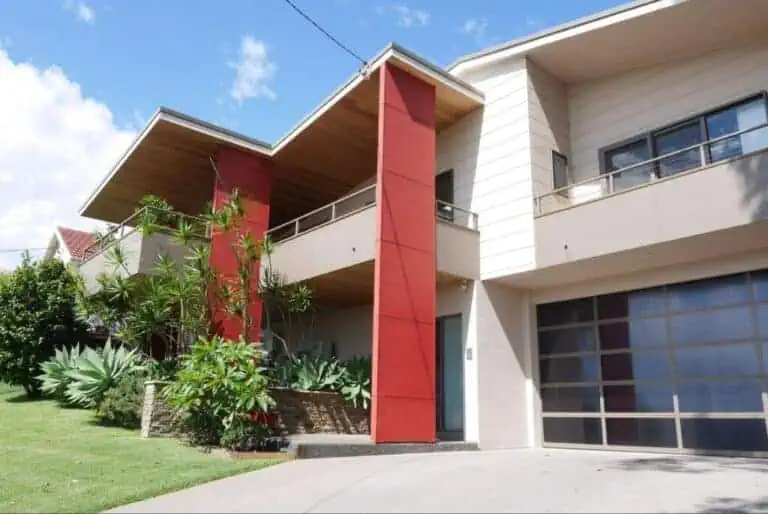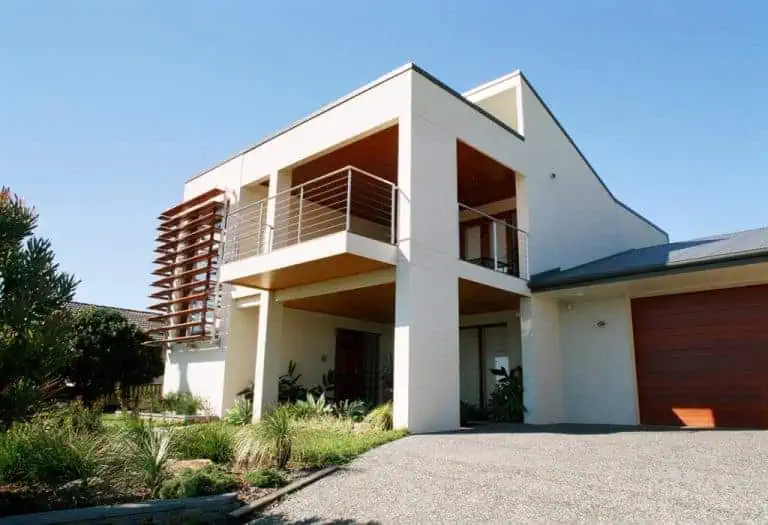
When it comes to building private houses, there are two kinds of documents we prepare as Architects. These documents serve different purposes and are used to gain different approvals.
This documents can be broadly defined as:
- Design documents – these can be used to obtain a Development Approval (D.A.)
- Construction documents – these can be used to obtain a Construction Certificate (C.C.)
Navigating planning and building legislation in New South Wales can be daunting. For one, it’s crucial to understand the development application process and the importance of obtaining a construction certificate before commencing construction – and how a D.A. and C.C. go hand-in-hand.
Mark Lawler Architects is available to create some clarity.
In this article, we explore the difference between a D.A. and a C.C, also outline the process of getting approval to build in 4 simple steps. Read on!
Step #1: Design Documents
Development approval and construction documents are normally preceded with an initial concept design.
Concept designs are more informal drawings often freehand sketches and diagrams. They’re designed to explore the possibilities and design solutions for a project. Usually, the drawings will provide site and floor plans, sections and occasionally three-dimensional modeling to assist with the client’s early consideration of a proposal.
After client feedback has been received, the concept designs are developed in more detail as an increasing level of certainty about the project is defined.
Once these designs have been finalised, the next step is to prepare a development application, otherwise known as D.A. documents. These documents have all the information required for a formal submission to the local Council for development approval.
During this stage of the project, an Architect will be juggling various tasks at once, including but not limited to:
- Refining the design
- Completing the design drawings with notes and dimensions
- Preparing a statement of environmental effects
- Scheduling materials, finishes and colours.
Around this time, a BASIX assessment is also completed to ensure the design will meet the required energy efficiency criteria established by the State Government.
Under the current planning controls, there is a high level of detail required for the submission of a Development Application. The submission requirements can be even more extensive on certain sites where a geotechnical investigation, bushfire report, Aboriginal heritage or flora and fauna study is also required as part of the D.A. submission.
Step #2. Development Application/D.A.
A Development Application or D.A. is a formal application to the local Council for planning approval to build.
There is often some confusion about the status of a D.A. and what this will enable an owner to do. A D.A. is approval of the design by the local Council – however, D.A. approval is not permission to commence construction of the project.
The approved D.A. represents the Council’s satisfaction with the design aspects of the project. These aspects include the height, setbacks from the boundaries, the site coverage, the area of landscaping, the compatibility with the streetscape, the colours and materials and vehicle parking and access.
When granting D.A. approval, the Council does not consider the technical aspects such as building construction, fire safety, structural support etc.
While the requirements for D.A. drawings these days involves a lot of detailed notes and dimensions, these drawings do not normally contain sufficient information for the project to be constructed.
Step #3. Construction Documents
After the concept design has been approved by the client and a D.A. approval has been obtained from the Council, the next step in the development process is the preparation of construction documents.
These construction documents are used to obtain a Construction Certificate or C.C.
The Construction Certificate is the approval required to enable an owner or builder to commence construction. A Construction Certificate can be issued by a local Council or by a private building certifier.
The construction documents serve several purposes. These documents show the method of construction, the structural system, the wall, floor and roof materials, the internal finishes for kitchens, bathrooms and other built-in joinery. All of this information is used by the builder to construct the project.
Prior to building the project, these documents provide the necessary information for a builder to prepare a tender or quotation. The construction documents form part of the building contract the owner will sign with the builder.
The construction documents usually consist of drawings and written specifications. The drawings include a site plan, floor plans, elevations, sections, construction details, details of kitchens and bathrooms, electrical and lighting layouts.
The specifications include contract requirements, descriptions of the quality required for certain works, product details, references to Australian Standards and any information that cannot adequately be provided on the drawings.
The drawings and specifications are intended to show the technical construction details to enable the project to be built. They show the dimensions of individual rooms, the overall building and its setout on the site.
These drawings also incorporate the structural details provided by the structural engineer. The documents will include the requirements of a bushfire report, if this is applicable. The construction drawings should also comply with the requirements of the Building Code of Australia in terms of satisfactory construction standards.
The information in a concise set of construction documents helps ensure that when competitive tenders are received from builders, the prices are comparable i.e. an owner can compare “apples with apples” as each builder should make all allowances included in the construction documents.
Construction documents lacking detail and resolution would not allow for accurate, fixed price tendering and can lead to problems, inefficiencies and cost blow-outs during the construction phase.
Step #4. Construction Certificate, C.C.
As we mentioned earlier in this blog, construction documents enable home owners to obtain a Construction Certificate.
The Construction Certificate or C.C. is the approval needed to commence construction. Due to the convoluted approval system currently in place as well as general ignorance, sometimes home owners will attempt to commence construction using the D.A. approved drawings.
When D.A. drawings are submitted to the Council or to a private certifier to obtain a Construction Certificate, the owner will discover the D.A. drawings do not contain all the information required for this purpose.
This can result in delays and confusion as the owner then seeks to supplement the D.A. drawings with the information necessary to obtain a C.C.
Both development applications and construction certificates are required to build your new home or business
There is a clear distinction between a D.A. and a C.C.
Unique documentation is required for both a D.A. and a C.C. For example, design drawings are prepared to obtain a D.A. but these drawings do not have to include all the technical information required for construction drawings.
This enables the design intent to be tested and approved without the expense of gathering this additional documentation.
The C.C. drawings, on the other hand, contain all the construction information and are prepared after the D.A. has been approved. This two-step approval process ensures money is not wasted in preparing detailed technical drawings for a design that may not be approved by the local Council.
The planning and building process is highly regulated in NSW. Various state governments have sought to simplify the process over the years to provide more efficient approvals – the most recent initiative was the introduction of Complying Development for residential construction – a topic for a future blog!
To obtain D.A. approval and navigate the Construction Certification process, it’s valuable to have an expert on your side. Mark Lawler Architects can provide advice on the various approvals required for your project and guide you through the complexity of planning legislation.
Get in touch with the team from Mark Lawler Architects for professional advice on D.A. approval and more.
Image: Unsplash


